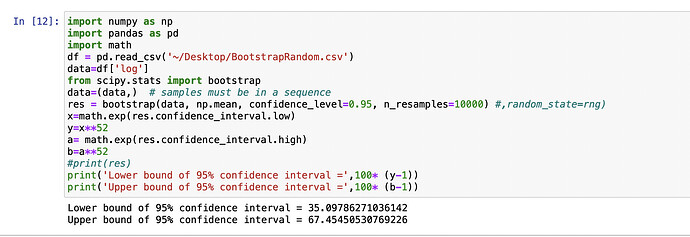I have started investigating ML as a method of building an investment system. It has got me thinking about how to determine what is worth putting my money into. Be that savings accounts, ETFS, multi-factor ranking systems at P123, or ML using ranks from P123.
Below is my thought process at the moment. I am interested in what other folks think as well!
All annual numbers I mention should be an average over about 10 years if the method is subject to significant volatility. I would also personally say it would be difficult for me to sit through more than a year or so of a 50%+ drawdown so that is probably my limit on the potential downside of a method in a back test.
- Start with the easiest/safest investments: must beat 5% annual returns
- Fidelity currently returns almost 5% on cash in an investment account. So if my method returns less than that annually I would rather hold cash right now.
- VTI is a very diversified ETF and is around 6% annual since it was released (less dividends). I also need to do better than this
- Private REITs can return 5-10% dividends as well and are easy to invest in
- Start considering more volatile investments, but still low effort: must beat 10% annual
- Easy ETFs like VOO and QQQ are good starters and at least in the last 10 years have done very well
- Stock picking has been a mixed bag for me and I am very guilting of just buying what sounded great (over about 5 years my accounts range from 20% annual to -50% (thanks crypto), but average about 9% annual)
- Multi factor ranking systems: not really sure what I should consider a baseline here, maybe 20% annual?
- I should probably consider a multi factor ranking system about the same as holding an ETF as many ETFs are just screens anyway…
- Back testing robustly is hard. I can squeeze a lot out of a back test even with something like core combinations on the Prussel 2000 universe (20% annualized or more) and I am inclined to believe most of that is due to overfitting as I used a fairly intelligent algorithm to explore the best weights for 2012-2018 out of the 10 year back test. So its a bit difficult to say when I have found something that I can feel confident putting a lot of money in compared to less effort options like VOO with OOS returns.
- That being said the upper bounds for what multi factor ranking systems and smart buy and sell rules can get you are pretty high. At least over 30% per year, and if the weekly email I get is to be believed maybe even over 100% is achievable some years.
- My last category is ML and is exploratory at the moment and entirely relative: metric for success, must be better than an optimized linear multi factor ranking system
- In other words the returns of the ML model out of sample (OOS) must be better than a robustly optimized ranking system, also OOS, using the same or similar factors and signals.
- This is mostly because multi factor ranking systems are simpler to maintain and understand. This may change when P123 rolls out their AI system, but for now if I do ML I am 100% responsible for making sure my code is working properly and updating it as needed.
